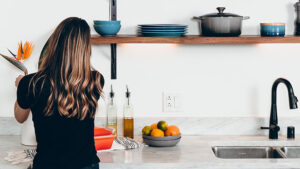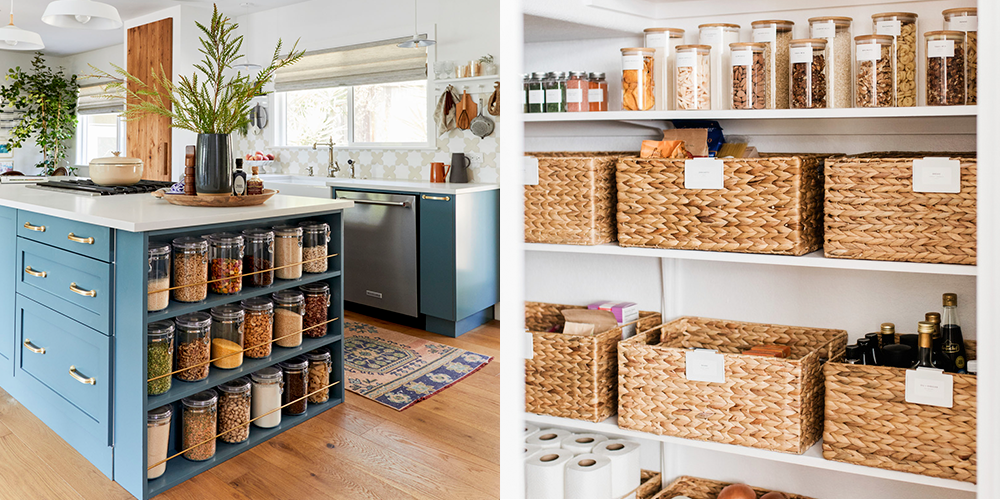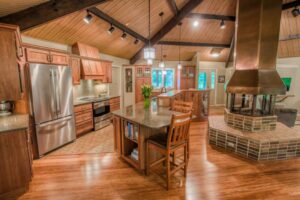Mastering the Art of Kitchen Design: Creating a Space that Inspires
The kitchen is often referred to as the heart of the home, and for a good reason. It’s not just a place to prepare meals; it’s where memories are made, conversations are had, and creativity is unleashed. Kitchen design plays a crucial role in shaping this multifunctional space, combining functionality, aesthetics, and personal style to create an environment that inspires and delights. In this blog post, we will explore the key principles and elements of kitchen design, along with some innovative ideas to help you create your dream culinary haven.
Understanding Functionality:
 Functionality forms the backbone of any successful kitchen design. Before diving into the aesthetics, it’s essential to consider how the space will be used and how it can be optimized for efficiency. The kitchen work triangle, consisting of the sink, stove, and refrigerator, is a fundamental concept that ensures a smooth workflow. Plan your layout with this triangle in mind, ensuring that the distance between these key elements is practical and comfortable.
Functionality forms the backbone of any successful kitchen design. Before diving into the aesthetics, it’s essential to consider how the space will be used and how it can be optimized for efficiency. The kitchen work triangle, consisting of the sink, stove, and refrigerator, is a fundamental concept that ensures a smooth workflow. Plan your layout with this triangle in mind, ensuring that the distance between these key elements is practical and comfortable.
Embracing Ergonomics:
Ergonomics is the science of designing spaces to maximize efficiency and minimize strain on the body. Incorporating ergonomic principles into your kitchen design will not only make your daily tasks more comfortable but also enhance productivity. Consider the height and placement of countertops, the position of appliances, and the accessibility of storage areas. Ergonomic designs cater to individuals of all ages and abilities, promoting a safe and inclusive environment.
Finding Your Style:
The kitchen is an extension of your personal style, so it’s crucial to choose a design theme that resonates with you. Whether you prefer sleek modernity, rustic charm, or timeless elegance, selecting a cohesive style will guide your choices for materials, colors, and finishes. Browse design magazines, visit showrooms, and create mood boards to help refine your vision and ensure a harmonious look and feel throughout the space.
Maximizing Storage Solutions:
Ample storage is a hallmark of a well-designed kitchen. Consider the specific needs of your household and invest in smart storage solutions that optimize every inch of space. Incorporate deep drawers, pull-out pantry shelves, and vertical storage options to keep your kitchen organized and clutter-free. Customized cabinets can be tailored to your needs, making efficient use of corner spaces and awkward angles.

Illuminating the Space:
Lighting plays a vital role in creating an inviting and functional kitchen. A well-lit space enhances visibility and improves safety while also setting the mood. Incorporate a layered lighting scheme that includes ambient, task, and accent lighting. Natural light is highly desirable, so whenever possible, maximize windows and use light-filtering materials for window treatments. Pendant lights, under-cabinet lighting, and statement fixtures are excellent choices to add a touch of style and functionality.
Choosing the Right Materials:
Selecting the right materials is crucial for achieving both the desired aesthetic and long-term durability. Countertops, flooring, backsplashes, and cabinetry should be chosen with consideration for their functionality, maintenance requirements, and visual impact. Granite, quartz, or butcher block countertops offer durability and beauty, while ceramic tiles and hardwood flooring provide practicality and warmth. Stainless steel appliances provide a sleek and modern look, while colorful appliances can serve as eye-catching focal points.
Adding Personality with Details:
Personal touches can transform a functional kitchen into a space that reflects your personality. Incorporate decorative elements such as artwork, plants, or a statement backsplash to inject character and visual interest. Open shelves can showcase your favorite cookbooks or curated collections, while a chalkboard wall or a magnetic board can serve as a practical and interactive feature for grocery lists or family messages.
Going Green:
 Sustainable design practices have gained immense popularity, and the kitchen is no exception. Opt for energy-efficient appliances, water-saving fixtures, and eco-friendly materials whenever possible. Consider composting options and incorporate recycling stations to minimize waste. Not only will these choices benefit the environment, but they will also contribute to a healthier and more efficient kitchen space.
Sustainable design practices have gained immense popularity, and the kitchen is no exception. Opt for energy-efficient appliances, water-saving fixtures, and eco-friendly materials whenever possible. Consider composting options and incorporate recycling stations to minimize waste. Not only will these choices benefit the environment, but they will also contribute to a healthier and more efficient kitchen space.
Designing a kitchen that seamlessly blends functionality, aesthetics, and personal style is a rewarding endeavor. By prioritizing functionality, embracing ergonomic principles, and incorporating your unique vision, you can create a space that inspires culinary creativity and fosters memorable moments. Remember to consider storage solutions, lighting, materials, and personalized details to infuse your kitchen with personality and charm. Whether you’re a culinary enthusiast or simply enjoy spending time in this vital space, a well-designed kitchen will undoubtedly enhance your overall living experience.